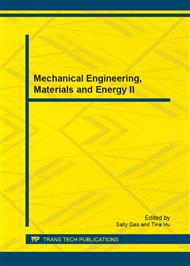p.165
p.170
p.176
p.180
p.185
p.190
p.197
p.201
p.206
Magic Cube Approach for Crashworthiness Design with Lightweight Considerations
Abstract:
This paper presents the basic theories and methodologies of the Magic Cube (MQ) approach, an advanced design approach which provides a systematic way to examine general crashworthiness and blast protection designs in terms of both structural and material aspects. The MQ approach is developed to assist the design process for improved structural crashworthiness: by applying time (process) decomposition, the original difficult nonlinear dynamic crashworthiness design problem is converted into a sequence of simplified linear design problems; by applying multi-domain topology optimization technique to the simplified linear design problems, the optimal configuration of the designed structure is obtained. A design of reinforced thin-walled rail under oblique impact is used to demonstrate the MQ approach. Numerical simulation results show that, compared with the original rail of the same weight, the MQ approach leads to a design with significantly higher energy absorption performance and lower initial crushing force under oblique impact.
Info:
Periodical:
Pages:
185-189
Citation:
Online since:
January 2013
Keywords:
Price:
Сopyright:
© 2013 Trans Tech Publications Ltd. All Rights Reserved
Share:
Citation:


